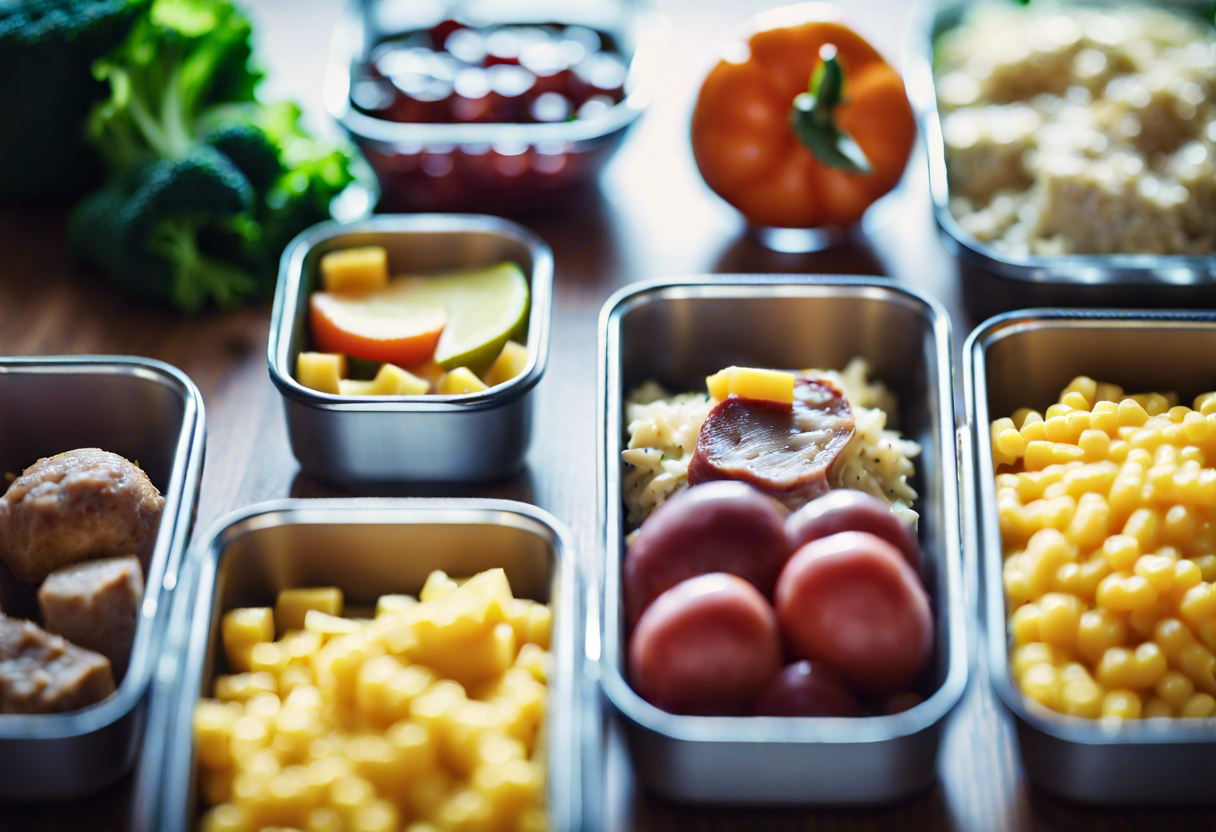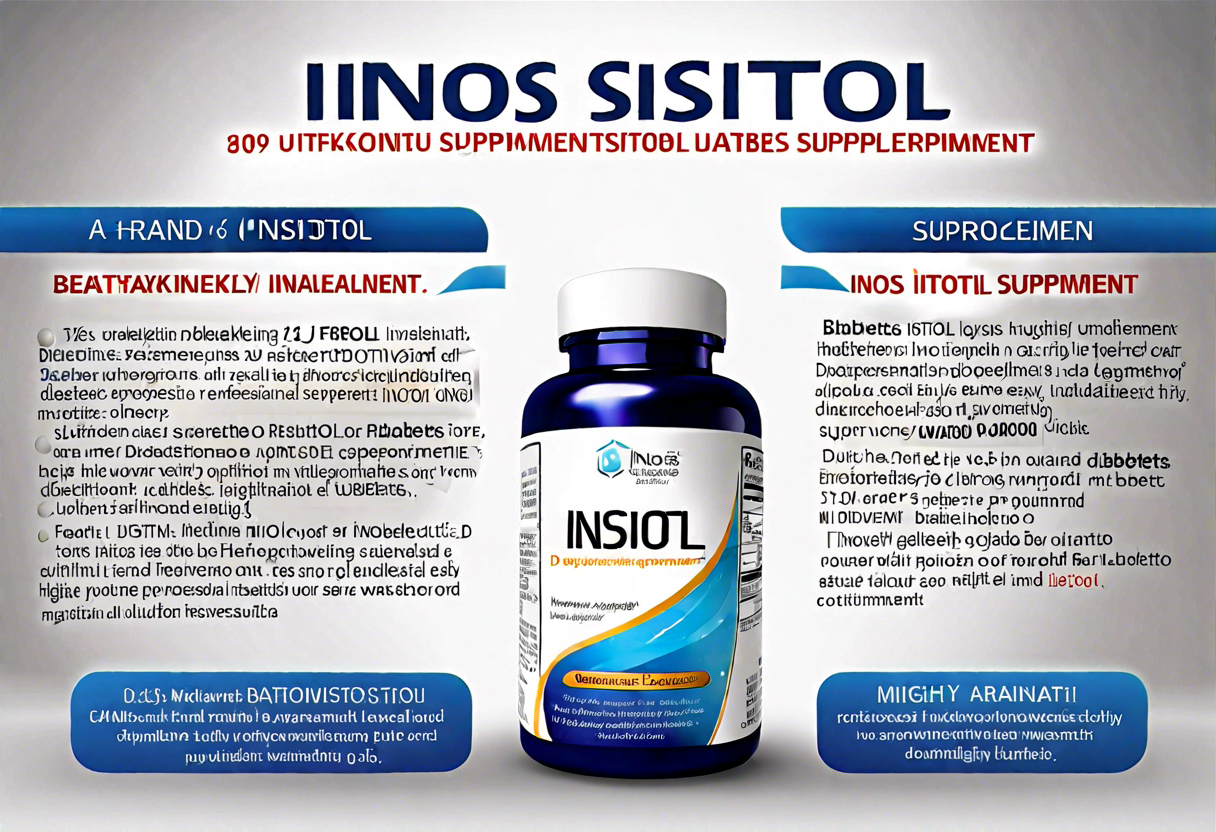Key Considerations When Creating a Type 2 Diabetes Meal Plan
Introduction
Living with type 2 diabetes requires careful meal planning to manage blood sugar levels effectively. A well-balanced meal plan can help individuals with type 2 diabetes maintain a healthy weight, reduce the risk of complications, and improve overall health. Here are some key considerations to keep in mind when creating a type 2 diabetes meal plan.
Carbohydrate Management
Managing carbohydrate intake is vital for individuals with type 2 diabetes. Carbohydrates have the most significant impact on blood sugar levels, so it’s crucial to choose the right type and amount of carbs. Focus on incorporating complex carbohydrates such as whole grains, legumes, and vegetables, which provide essential nutrients and have a lower impact on blood sugar levels than refined carbohydrates.
Controlling portion sizes is equally important. Measuring out serving sizes or using specialized diabetic meal planning tools can help individuals keep track of their carbohydrate intake accurately. It’s essential to work closely with a registered dietitian or healthcare provider to determine the appropriate carbohydrate goals for each meal and snack.
Distributing Macronutrients
In addition to managing carbohydrates, it’s crucial to distribute macronutrients – carbohydrates, proteins, and fats – appropriately throughout the day. Including a source of lean protein in each meal and snack can help stabilize blood sugar levels, provide satiety, and support muscle health.
Good sources of lean protein include skinless poultry, fish, tofu, eggs, and low-fat dairy products. When it comes to fats, choose healthier options such as olive oil, avocados, and nuts, while limiting the intake of saturated and trans fats. Balancing macronutrients can help individuals feel satisfied, prevent blood sugar spikes, and support overall health.
Nutrient-Dense Foods
When planning meals, focus on incorporating a variety of nutrient-dense foods. These foods are rich in vitamins, minerals, and fiber, while being low in added sugars, unhealthy fats, and sodium. Examples of nutrient-dense foods include leafy green vegetables, colorful fruits, whole grains, lean proteins, and healthy fats.
Including a wide range of nutrient-dense foods in your meal plan can help ensure you get all the necessary nutrients for optimal health, while also promoting overall satiety and wellbeing. Experimenting with different flavors and cuisines can help keep meals exciting and enjoyable.
Creating a type 2 diabetes meal plan involves careful consideration of carbohydrate management, macronutrient distribution, and the inclusion of nutrient-dense foods. Seeking guidance from a registered dietitian or healthcare provider can provide personalized recommendations and support to help manage blood sugar levels effectively. By making conscious choices and following a well-balanced meal plan, individuals with type 2 diabetes can take control of their dietary choices and promote better health outcomes. Remember, consistency and moderation are key when it comes to managing type 2 diabetes through meal planning.
Key Considerations for Creating a Type 2 Diabetes Meal Plan
When managing type 2 diabetes, creating a well-balanced meal plan is crucial for maintaining stable blood sugar levels and overall health. Here are some key considerations to keep in mind when designing a meal plan that supports your diabetes management goals.
1. Consult with a Registered Dietitian or Healthcare Provider: To create an effective type 2 diabetes meal plan, it’s important to seek guidance from a registered dietitian or healthcare provider. They can provide personalized advice based on your specific needs, preferences, and medical history.
2. Focus on Balanced Nutrition: A well-balanced meal plan should include a variety of nutrient-dense foods from all major food groups. Aim to incorporate lean proteins, whole grains, fruits, vegetables, and healthy fats into your daily meals.
3. Understand Glycemic Index and Load: The glycemic index (GI) measures how quickly carbohydrates in foods raise blood sugar levels. Foods with a low GI can help stabilize blood sugar levels and promote better diabetes management. Additionally, considering the glycemic load (GL), which takes into account both the quality and quantity of carbohydrates, can further aid in blood sugar control.
4. Manage Carbohydrate Intake: Carbohydrates have the most significant impact on blood sugar levels, so monitoring and managing your carbohydrate intake is essential. Incorporate complex carbohydrates like whole grains, legumes, and non-starchy vegetables, and limit simple carbohydrates such as refined grains and sugary foods and beverages.
5. Practice Portion Control: Keeping portion sizes in check is vital for managing blood sugar levels and maintaining a healthy weight. Use measuring cups, a food scale, or visual cues to ensure you’re consuming appropriate portion sizes for each food group.
6. Monitor your Protein and Fat Intake: While carbohydrates are the primary focus of diabetes meal planning, it’s also crucial to pay attention to protein and fat intake. Choose lean sources of protein like skinless poultry, fish, and legumes, and opt for healthy fats from sources like avocados, nuts, and olive oil.
7. Consider Regular Mealtimes: Establishing consistent meal times and spacing meals evenly throughout the day can help stabilize blood sugar levels. Avoid skipping meals or going long periods without eating.
8. Be Mindful of Hidden Sugars and Added Ingredients: When selecting packaged foods, read labels carefully to identify hidden sugars or added ingredients that may impact blood sugar control. Look for items with minimal processing and avoid those with excessive amounts of added sugars, sodium, and unhealthy fats.
9. Stay Hydrated: Drinking an adequate amount of water throughout the day is essential for overall health, including diabetes management. Opt for water, unsweetened tea, or flavored water without added sugars.
By incorporating these key considerations into your type 2 diabetes meal plan, you can better manage your blood sugar levels and support your overall health and well-being. Remember to work closely with your healthcare team to tailor your meal plan to your specific needs and monitor the impact on your diabetes management.
Type 2 Diabetes Meal Planning Tips: Portion Control and Carbohydrate Management
When it comes to managing type 2 diabetes, meal planning plays a crucial role in maintaining blood sugar levels and overall health. One of the key considerations in creating a type 2 diabetes meal plan is portion control and carbohydrate management. By carefully monitoring the amount and type of carbohydrates consumed, individuals with type 2 diabetes can effectively manage their blood sugar levels and reduce the risk of complications.
Portion control is essential for individuals with type 2 diabetes as it helps manage calorie intake and prevent fluctuations in blood sugar levels. It is important to measure and regulate the amount of food consumed, especially carbohydrates, which have a significant impact on blood sugar levels. A general guideline for portion control is to fill half your plate with non-starchy vegetables, one-quarter with a lean protein source, and one-quarter with a whole grain or starchy vegetable.
In addition to portion control, managing carbohydrate intake is crucial in type 2 diabetes meal planning. Carbohydrates have the most significant impact on blood sugar levels, so it is essential to choose healthy sources and distribute them evenly throughout the day. Examples of healthy carbohydrate sources include whole grains, legumes, fruits, and vegetables. It is important to be mindful of the glycemic index (GI) of carbohydrates, which indicates how quickly they raise blood sugar levels. Opt for low-GI carbohydrates to maintain stable blood sugar levels.
Another helpful strategy for managing carbohydrate intake is carbohydrate counting. This involves determining the number of carbohydrates in each serving of food and adjusting insulin or medication doses accordingly. Working with a registered dietitian can be beneficial in learning how to count carbohydrates and tailor meal plans to individual needs. They can help create a personalized meal plan that takes into consideration factors such as age, weight, level of physical activity, and overall health goals.
Portion control and carbohydrate management into a type 2 diabetes meal plan allows for better blood sugar control and improved overall health. It helps individuals maintain a balanced diet while still enjoying a variety of foods. It is important to remember that meal planning is not about depriving oneself, but rather making informed choices and creating a sustainable eating plan.
Portion control and carbohydrate management are essential components of a type 2 diabetes meal plan. By being mindful of portion sizes, choosing healthy carbohydrate sources, and balancing them throughout the day, individuals can effectively manage their blood sugar levels. Working with a registered dietitian can provide guidance and support in creating a personalized meal plan tailored to individual needs. With the right strategies in place, individuals with type 2 diabetes can lead a healthy, balanced lifestyle while effectively managing their condition.
Type 2 Diabetes Meal Planning: Nutrient-Dense Foods
When it comes to managing type 2 diabetes, a key aspect of meal planning is incorporating nutrient-dense foods into your diet. These foods are rich in vitamins, minerals, and other essential nutrients, while being relatively low in calories. Including a variety of these foods in your meals can help stabilize blood sugar levels, promote weight management, and improve overall health. Here are some tips on how to incorporate nutrient-dense foods into your type 2 diabetes meal plan.
-
Start with fruits and vegetables:
- Fill half of your plate with non-starchy vegetables like leafy greens, broccoli, bell peppers, and cauliflower. These vegetables are high in fiber and low in carbohydrates, making them a great choice for managing blood sugar levels.
- Include a portion of fruit with your meals, but be mindful of the carbohydrate content. Opt for low-glycemic fruits like berries, apples, and citrus fruits, which have a lower impact on blood sugar compared to high-glycemic fruits like watermelon and pineapple.
-
Emphasize lean proteins:
- Incorporate lean protein sources such as skinless poultry, fish, tofu, and legumes into your meals. These foods are not only packed with protein but also provide important nutrients like iron and zinc.
- Avoid processed meats, as they are often high in sodium and unhealthy fats. Instead, opt for lean cuts of meat and poultry.
-
Choose whole grains:
- Replace refined grains like white bread, white rice, and pasta with whole grains such as whole wheat bread, brown rice, quinoa, and oats. Whole grains are rich in fiber, which helps to regulate blood sugar levels and promote a feeling of fullness.
- Check food labels and choose products with the words "whole grain" listed as one of the first ingredients.
-
Include healthy fats:
- Incorporate sources of healthy fats into your meals, such as avocados, nuts, seeds, and olive oil. These fats are beneficial for heart health and can help improve insulin sensitivity.
- Limit saturated and trans fats found in fried foods, high-fat dairy products, and fatty cuts of meat.
-
Don’t forget about dairy:
- Choose low-fat or fat-free dairy products like milk, yogurt, and cheese to provide calcium and protein in your diet. These foods can be a great addition to your type 2 diabetes meal plan.
- Opt for plain or unsweetened versions of these products to avoid added sugars.
By incorporating nutrient-dense foods into your type 2 diabetes meal plan, you can ensure that you are getting the necessary nutrients while keeping blood sugar levels in check. Remember to monitor portion sizes and work with a registered dietitian to create a personalized meal plan that meets your specific needs. With the right approach and a focus on healthy, balanced eating, you can effectively manage type 2 diabetes and improve your overall well-being.
Tips for Dining Out while Managing Type 2 Diabetes
When you have type 2 diabetes, dining out can often pose a challenge. However, with careful planning and some simple strategies, you can still enjoy eating out while effectively managing your condition. Here are some tips to help you make informed choices and maintain a healthy lifestyle:
-
Research the menu beforehand: Before heading to a restaurant, take the time to review the menu online. Look for options that align with your diabetes meal plan, such as lean proteins, vegetables, and whole grains. Avoid dishes that are high in saturated fats, added sugars, and sodium.
-
Watch your portion sizes: Restaurants often serve large portions, which can lead to overeating and spikes in blood sugar levels. Consider sharing a meal with a friend or asking for a takeout container at the beginning of the meal to pack up half of your meal for later. Opt for smaller portion options if available.
-
Choose healthier cooking methods: Look for dishes that are grilled, baked, steamed, or broiled instead of fried or deep-fried. These cooking methods help to reduce the overall fat content of the meal while still providing flavor.
-
Substitute and customize: Don’t be afraid to ask for substitutions or modifications to meet your dietary needs. For example, you can request to replace starchy sides like mashed potatoes or fries with a side of steamed vegetables or a salad. Ask for sauces and dressings on the side so that you can control the amount you consume.
-
Be mindful of added sugars: Sugary beverages like soda, sweetened teas, and fruit juices can cause blood sugar spikes. Opt for water, unsweetened tea, or sparkling water with a squeeze of lemon or lime instead. If you prefer a flavored beverage, look for diet or zero-calorie options.
-
Savor the flavors and eat mindfully: Take your time to savor each bite and enjoy the flavors of your meal. Eating slowly and mindfully can help you recognize when you’re full and prevent overeating. Put your fork down between bites and engage in conversation to slow down your eating pace.
-
Be prepared with snacks: If you’re unsure about the options available at a restaurant or if you anticipate a long wait, pack a small snack to have before your meal. This can help prevent excessive hunger and reduce the temptation to make unhealthy choices.
-
Communicate with your server: Inform your server about your dietary restrictions and ask for their recommendations. They can often provide insight into healthier options or offer suggestions on how to customize a dish to meet your needs.
Remember, managing your type 2 diabetes doesn’t mean you have to sacrifice enjoying a meal out. By planning ahead, making informed choices, and being mindful of portion sizes, you can effectively manage your condition while still indulging in the social experience of dining out. It’s important to work closely with your healthcare team to develop a personalized meal plan that fits your needs and preferences.
Conclusion
Type 2 diabetes requires careful meal planning to manage blood sugar levels and promote overall health. Understanding the impact of type 2 diabetes on meal planning is crucial in making informed choices. Key considerations in creating a type 2 diabetes meal plan include monitoring carbohydrate intake, portion control, and selecting nutrient-dense foods. These strategies help maintain stable blood sugar levels and promote weight management.
Managing portion sizes and carbohydrates plays a vital role in type 2 diabetes meal planning. Portion control helps prevent overeating and promotes weight management. By measuring and controlling serving sizes, individuals with type 2 diabetes can better manage their blood sugar levels. Additionally, monitoring carbohydrate intake is important since carbohydrates directly impact blood glucose levels. By choosing whole grains and fiber-rich carbohydrates, individuals can promote more stable blood sugar levels and overall health.
A variety of nutrient-dense foods into a type 2 diabetes meal plan is essential for meeting nutritional needs. Nutrient-dense foods provide essential vitamins, minerals, and fiber without excessive calories or added sugars. Choosing lean proteins, such as poultry, fish, and legumes, helps promote satiety and support stable blood sugar levels. Filling half the plate with non-starchy vegetables, such as broccoli, spinach, and peppers, adds bulk without adding excess carbohydrates. healthy fats, like avocados and nuts, in moderation can also contribute to a well-balanced meal plan.
When dining out, individuals with type 2 diabetes can still make healthy choices by applying certain tips and strategies. It is helpful to check the menu in advance and look for options that align with a type 2 diabetes meal plan. Opting for grilled or baked proteins, choosing steamed or roasted vegetables, and requesting dressings and sauces on the side can help control both portion sizes and carbohydrate intake. Regarding beverages, selecting sugar-free options or choosing water can further support healthy meal choices.
Type 2 diabetes meal planning involves considering a variety of factors to support blood sugar management and overall health. By prioritizing portion control, monitoring carbohydrates, incorporating nutrient-dense foods, and making informed choices when dining out, individuals with type 2 diabetes can better control their condition and improve their quality of life. It is important to work with a registered dietitian or healthcare provider to develop a personalized meal plan tailored to individual needs and preferences. With consistent adherence to a well-balanced meal plan, individuals with type 2 diabetes can effectively manage their condition and reduce the risk of complications.









